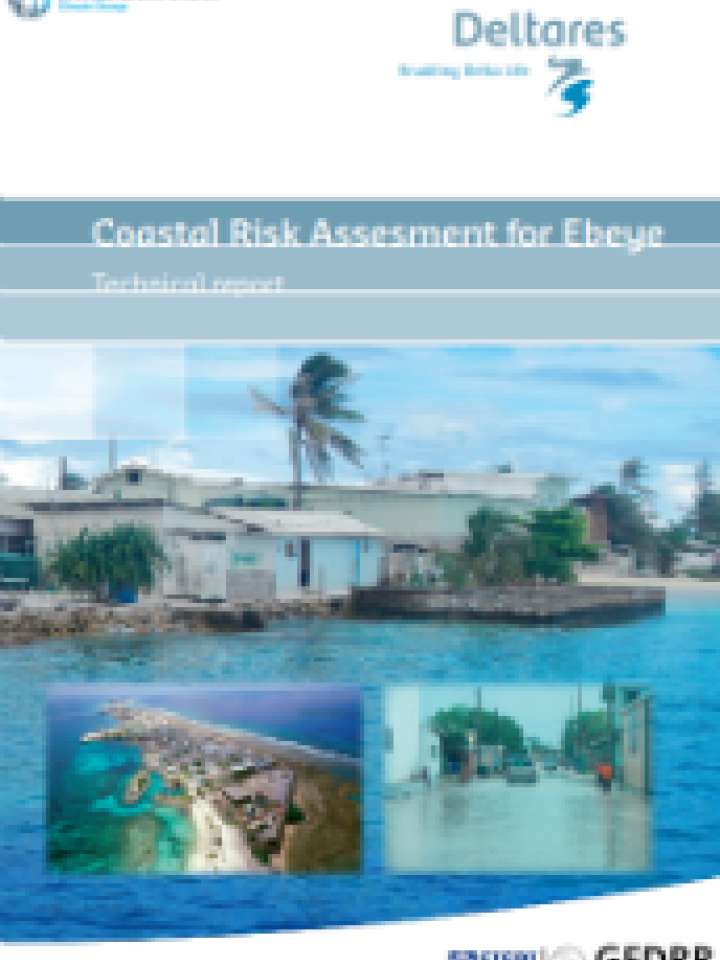Marshall Islands: Coastal risk assesment for Ebeye
The study finds that direct and indirect damages due to flooding and coastal erosion on Ebeye Island are possible. The main source of direct damages are damages to the houses and to the causeway. Estimated total damages may increase of about a factor 3 to 4 by the end of the century due to sea level rise, and depending on the sea level rise scenario considered. The expected annual affected people (EAAP), defined as the number of people yearly affected by a flooding event with a water depth of at least 20 cm of water, may double by the year 2100.
The study also recommenda improvements in data availability. Availability in Ebeye is very scarce even after the data sourcing and collection performed in this study. Also, no damage report was available describing damages after the most extreme events, and which could be used for verification of the risk assessment calculations and to evaluate the efficiency of the different interventions.
The authors mainly focus on identifying the most effective solutions to reduce the overall risks, by reducing coastal hazards (i.e. by using the construction of a revetment on the lagoon side). However, other options should also be explored parallel to this alternative, and aiming at reducing: the vulnerability of some of the constructions (e.g. by using elevated houses on poles) or the exposure (e.g. by relocating people from the areas where risks are higher). Finally, all these options should be complemented by the use of early warning systems to alert people before the arrival of extreme events (e.g. swell waves, typhoons, tsunami’s) which can be forecasted. Also, use of trained personnel and safeguards is advised to be able to deal with disaster and post-disaster situations.
Explore further
